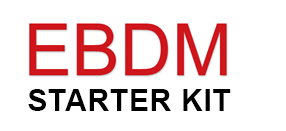8a: Building a Plan for Implementation
EBDM Starter Kit
8a: Building a Plan for Implementation
Navigating the Roadmap

Activity 8: Develop a strategic action plan for implementation.
Considerations for Developing Harm Reduction Goals and Objectives
- How will the jurisdiction benefit as a whole (i.e., what are the intended harm reduction outcomes)?
- How will the criminal justice system benefit from movement to an EBDM-based system?
- What is an EBDM system intended to achieve or produce?
- What significant changes do you expect from the implementation of EBDM in terms of system operation?
- How will the costs to operate the system change?
- How will case processing change at point of entry into the system, during the adjudication process, post-adjudication, and/or at point of release?
- How will those in the system (i.e., victims, witnesses, and defendants) view the process?
- How will EBDM impact those working in the system?
- What types of information will convince you and others (including the public and funders) that the system is operating at an optimum level?
- What types of information will convince you and others that the system is achieving what it is intended to achieve?
For more information, see 6a: Measuring Your Performance
Introduction
During the EBDM Initiative, your policy team has undertaken a number of preparation activities for implementing the Framework. These activities include
- building a collaborative, multidisciplinary policy team;
- preparing the team members’ individual agencies for change;
- understanding current practice within each agency and across the system;
- understanding and increasing your jurisdiction’s capacity to implement evidence-based practices;
- developing logic models;
- establishing common harm and risk reduction outcomes and performance measures (and displaying them on a system scorecard); and
- developing plans for engaging broader support for the Initiative.
The culmination of these preparations leads your team to this final, but critically important, step: to develop a strategic action plan for implementation.
Purpose
To create a clear, specific, measurable plan for implementing the policy and practice changes that the policy team agrees will advance evidence-based decision making in your jurisdiction and that will support the achievement of the justice system’s vision and goals.
Participants
All policy team members should be involved to some extent in the development of your implementation plan, particularly in the development of harm reduction goals and objectives. After these decisions have been reached, staff internal to the agency(ies)—usually with some background in conceptualizing, planning, and implementing policy or program initiatives—and/or outside experts can assist in the development of the implementation plan, with guidance and input from the policy team.
Instructions
A number of preparation and self-assessment activities must occur simultaneously to lay the groundwork for implementing the EBDM Framework in a jurisdiction. These activities include developing harm reduction goals, objectives, and action steps; developing a systemwide logic model; drafting a communications strategy for gaining the buy-in of a broader set of stakeholders or the public; and creating a systemwide scorecard.1 While every team will not develop its plan in the same way, the following steps are important to developing a comprehensive implementation plan:
- Discuss and agree upon your team’s harm reduction goals, if your team has not come to some agreement on this already.2
- Develop logic model(s). At a minimum, the team should develop a systemwide logic model that clearly outlines the path to achieving the team’s top harm reduction goals.3 This activity will assist the team in developing many of the pieces of its implementation plan.
- Develop objectives (which should be represented as outcomes in your logic model). Remember, while goals represent the desired end results of the system, objectives define the short-term indicators that demonstrate progress toward goal attainment and describe who or what will change, by how much, and over what period of time.
- Define the action steps that will be necessary to achieve your harm reduction goals. (The major action steps can be found in the activities section of the logic model.)
- Determine who from your jurisdiction will take the lead and who will need to be involved in these steps.
- Determine the timing and sequence of these steps.
- Consider any potential barriers to your work plan and strategize about how your team will overcome them. Barriers can be determined by considering the contextual conditions (i.e., the environment in which the local justice system operates, including political, economic, social, and cultural factors) that your team identified in your logic model.
- Discuss how your team would like to engage a broader set of stakeholders and/or the public in EBDM, if you have not done so already.4 Ensure that any agreements regarding this strategy are reflected in your work plan; these may encompass goals, objectives, and/or action steps, as appropriate.
The chart below displays these steps and indicates how these multiple activities might fit together.
|
Possible Steps to Developing an Implementation Work Plan |
|
| Step 1: Develop Harm Reduction Goals |
Develop the long-term harm reduction goals your team seeks to achieve. Your harm reduction goals are recorded on your system scorecard. Harm Reduction Goal Example: Increasing the success rate of individuals who become involved in the justice system from the 2010 rate of x% to y% by 2014 |
| Step 2: Develop a Logic Model |
After recording your harm reduction goals as the impacts on the logic model, follow 5a: Building Logic Models in order to determine the
Once your logic model is complete, you can use the information it contains to build the rest of your work plan and scorecard. |
| Step 3: Develop Objectives |
Objectives define the short-term indicators that demonstrate progress toward attaining your harm reduction goals and describe who or what will change, by how much, and over what period of time. Your objectives are the short-term outcomes on your logic model. Objective Example: Decrease of X% in low risk defendants held in jail awaiting adjudication within X months |
| Step 4: Develop Action Steps |
Action steps are the “activities” on the logic model—the steps that must be taken to reach the objectives that will lead to your harm reduction goal. Since only major activities are likely included on the logic model, expand these—if and as needed—on your work plan to reflect all of the planned action steps. Include as an action step on the work plan the development of agency-level logic models for all agencies significantly involved in the achievement of the objectives. Actions Step Example: Train pretrial staff on use of assessment tool. |
| Step 5: Determine Who Is Responsible/ Involved |
Determine the person(s) responsible for accomplishing each action item, the person(s) responsible for decision making, needs related to resource allocation, and coordination with other entities. Record these assignments on the work plan. |
| Step 6: Determine Timing and Sequencing | Define the timing and sequencing of the action steps. Record this information on the work plan. |
| Step 7: Recognize Potential Barriers to Implementation | Consider the contextual conditions in your logic model and describe the potential barriers to implementation and strategies for addressing these barriers. Record these on the work plan. |
| Step 8: Develop a Communications Strategy |
If one or more harm reduction goals in your work plan do not include engaging new stakeholders, increasing support and engagement from the community, or communicating the jurisdiction’s harm reduction goals to the public, develop a strategy for doing so. Include it as an objective with action steps on the work plan. Refer to 7a: Developing a Communications Strategy. |
A template of a work plan is provided in the Appendix. It illustrates how the multiple elements of the work plan might be displayed in chart form.
Tips
- It may not be possible to forecast the very specific steps for activities that will be accomplished in the later months; try to develop in more detail the more immediate tasks (i.e., 3–4 months) that need to be accomplished.
- Teams may find that creating a visual timeline, separate from the work plan, is helpful in organizing the many anticipated tasks. An example of a timeline is provided.
- If certain baseline data is not available, make sure to include in your work plan the anticipated steps your team will need to take to collect it.
- Teams should revisit their implementation plans regularly to make revisions and adjustments as needed.
1 See 6b: Developing a Systemwide Scorecard.
2 For more detailed information on this process, see the first step in 6a: Measuring Your Performance.
3 See 5a: Building Logic Models.
4 See 7a: Developing a Communications Strategy.
Examples
Mesa County, Colorado, Work Plan for Implementation (Excerpt from Full Document)
Eau Claire, Wisconsin, Timeline for Implementation
Additional Resources and Readings
CSOM. (2007). Enhancing the management of adult and juvenile sex offenders: A handbook for policymakers and practitioners. Retrieved from http://www.csom.org/pubs/CSOM_handbook.pdf
CEPP. (2005). Collaboration: A training curriculum to enhance the effectiveness of criminal justice teams. Retrieved from www.collaborativejustice.org/docs/2005 Collaboration Curriculum.pdf
McGarry, P., & Ney, B. (2006). Getting it right: Collaborative problem solving for criminal justice. (NIC Accession No. 019834). Retrieved from http://nicic.gov/Downloads/PDF/Library/019834.pdf
Appendix
PDF/Printer Friendly Version of Section










